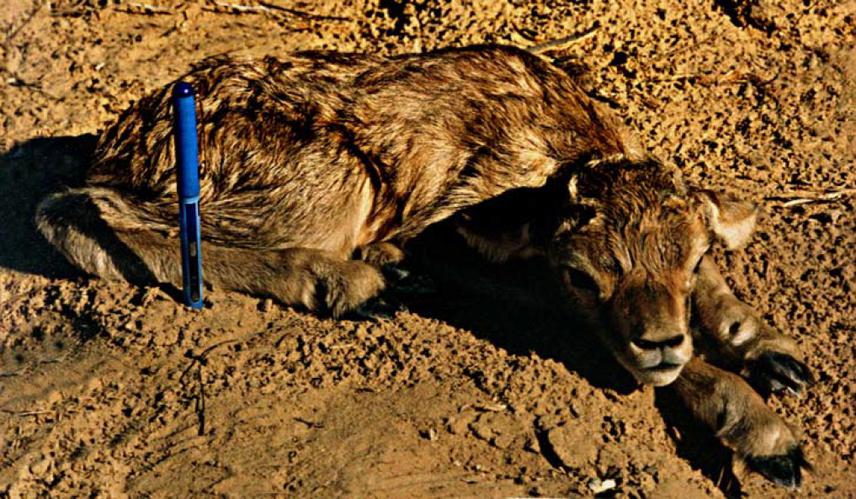Sumit Dookia
Other projects
26 Mar 2008
Conservation of Indian Gazelle or Chinkara through Community Support in Thar Desert of Rajasthan, India II
8 Mar 2010
Conservation of Indian Gazelle or Chinkara through Community Support in Thar Desert of Rajasthan, India II
The study aims to estimate population status, habitat use and awareness in local communities of the Indian Gazelle or Chinkara.

24 hr. old Chinkara fawn. Due to the perfect camouflage, sighting of fawn from far distance is quite impossible.
Indian gazelle or Chinkara (Gazella bennettii), a globally near threatened ungulate which is included in the schedule I of the wildlife protection Act (1972), India and “Lower Risk/Conservation Dependant” as per the IUCN Red Data List (2002).
Chinkara once having a wide distribution in India but in the present scenario, due to increasing human population, mechanised agriculture and hunting by local communities their population declined very fast. Today Chinkara is locally abundant and occurs in restricted areas. The present study aims to estimate population status, habitat use and aware local communities. For awareness students, local NGOs, village community groups and forest department staff will be trained and later involved in the monitoring. They will be taken into confidence and a network of people formed, that will help in long term monitoring of Chinkaras beyond the project duration in Thar Desert of Rajasthan. Community groups will be prepared of different age, to disseminate conservation massage. A campaign will be started with series of local workshop, with a motive to conserve the Chinkaras and their habitat, their relationship with other wildlife and roll in daily life of locals, and also highlighted as a key indicator of desert ecosystem.
Further awareness will be created among inhabitants on the importance of gazelles as an indicator of balanced ecosystem. That itself is a big contribution in targeting conservation measures for Chinkaras. The study also identify threats to the habitat, animal it self and recommendations will be made for the protection of Chinkara. Importance will be given to build up community-animal relationship and Chinkaras’ role as healthy indicator of desert ecosystem.